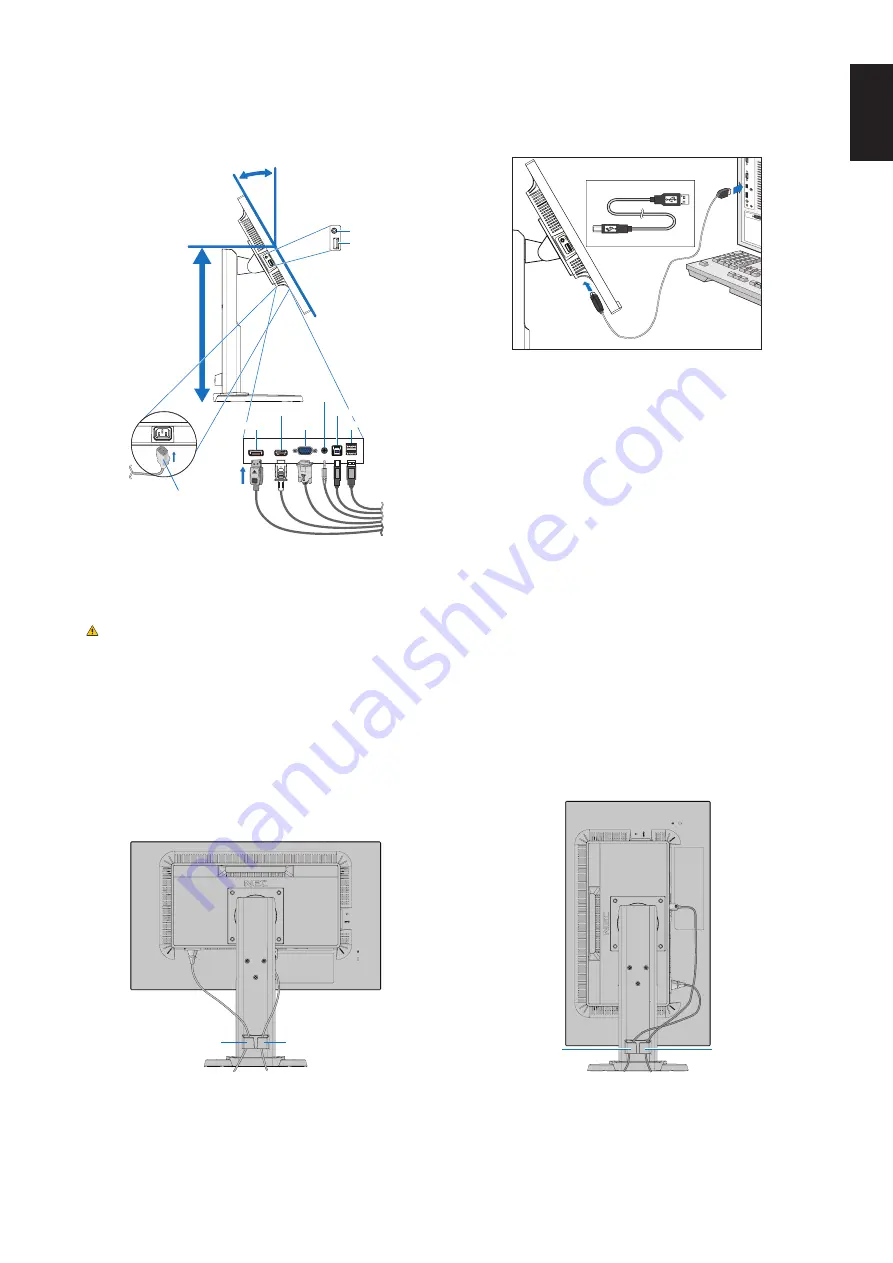
English-11
English
3. Place hands on each side of the monitor screen, tilt the screen to the maximum tilt angle, then lift the screen to the highest
position.
4. Connect all cables to the appropriate connectors (
Figure C.1
). hen using the USB cable, connect the Type-B connector
to the USB upstream port on the rear side of the monitor and the Type-A connector to the downstream port on the computer
(
Figure C.1a
). If using the cord from a USB device, plug it into the downstream port of the monitor.
Figure C.1a
Type-A
Type-B
Type-A
Type-B
Figure C.1
Power cord
Maximum Tilt
DisplayPort
HDMI
Highest Monitor
Stand Position
Audio IN
D-Sub
USB Downstream (USB Type-A)
USB Upstream (USB Type-B)
USB Downstream (USB Type-A)
Headphone
NOEE:
Incorrect cable connections may cause abnormal operation, damage display quality/components of the LCD panel
and/or shorten the module’s life.
CAUOINE:
Do not bind the USB cable. It may trap heat and start a fire.
NOEE:
Do not use an attenuating (built-in resistor) audio cable. Using an audio cable with a built-in resistor will lower the
sound level.
NOEE:
Adjustment of the volume control as well as the equalizer to settings other than the center position may increase
the ear-/headphones output voltage and therefore the sound pressure level.
5. Place the cables into the cable management system that is built into the monitor stand firmly and evenly (
Figure C.2
and
Figure C.3
).
6. Please check that you can still rotate, raise and lower the monitor screen after you have installed the cables.
Figure C.2
Figure C.3
Power Cord
DisplayPort Cable
Power Cord
DisplayPort Cable
7. Connect the power cord to the power outlet.
NOEE:
Please refer to the
section of this manual for proper selection of the AC power cord.











































